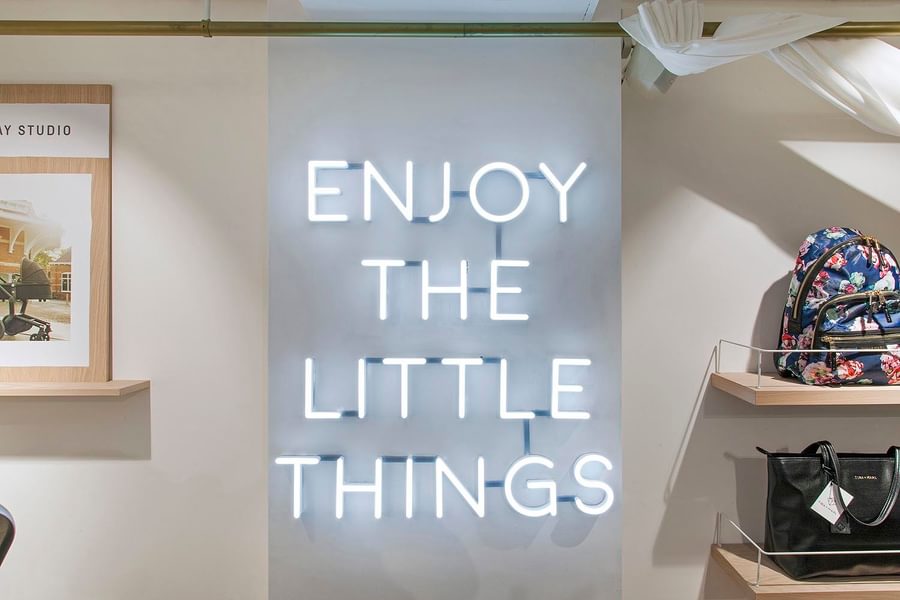Brand storytelling - Where to start?
Key considerations for successful storytelling, as Communications Team Leader Matt Avery breaks down the importance of getting the basics right.


Key considerations for successful storytelling, as Communications Team Leader Matt Avery breaks down the importance of getting the basics right.


Storytelling is a universal part of human nature. Throughout the ages, its power has been harnessed to inspire communities to listen, learn and connect. We all enjoy a good story - and those we really love, we engage with more than once and retell to others. Methods have evolved over time - we’ve thankfully moved on from the cave paintings of old - and as language and technology have developed, so too has the art of storytelling, becoming richer, more detailed and ultimately more engaging in the process.
So the idea of brands telling stories is a bit like ‘florals for spring’ - it’s not exactly groundbreaking, we’ve all experienced it before. But while the concept isn’t new, the importance of getting it right has never been greater. The rapid advancement and accessibility of technology worldwide, and the ease at which anyone and everyone can broadcast, has made the general level of noise around us much louder, and the ability to cut through it even harder.
In danger of being lost in this loud, saturated market, brands can no longer afford to be quiet or faceless - they need to have an opinion and a point of view. A solid, well-known and reliable product, service or brand is no longer enough to keep people engaged. This is where the power of brand storytelling comes in - by communicating compelling narratives, you can set yourself apart and connect with people on a more personal and meaningful level. Competitors may fundamentally do the same thing as you, but if they articulate themselves better and position themselves in a memorable way, your brand will be the one that’s left behind.
The path of the would-be storyteller can seem like a treacherous one - we’ve unfortunately all seen brands get their content or tone wrong and face the backlash (prematurely ageing a social media manager in the process). Technology may allow brands to reach more people than ever before, but in this new and unforgiving era of social media and instant feedback, brand storytelling has never been easier to get wrong. It’s vital to think carefully about where to begin, and what stories to tell.

So, where to start? At Dalziel & Pow we find a simple framework of questions is key to steer brands in the right direction, ensure they tell the right stories to the right audience and create impact for all the right reasons. Now these may seem deceptively simple or obvious, but judging by the mixed bag of brand storytelling out there, not everyone spends enough time answering the fundamentals of who, what, why, how, and where.
A good first question to answer is, who are you telling these stories to? Identifying the demographic early on is important as it will determine your tone and where you tell your stories. Decide whether you’re speaking to a new audience or existing brand loyalists, as this will help shape the overall message and whether your story should attract or retain customers - or perhaps both. Geography is also a factor here because certain stories resonate differently in different regions. For example, brand provenance might be very important in one part of the world but a total snooze-fest in another. Once you’ve established who you’re talking to, you can then think about the what and the why.
Possibly the most important of all – what do you want to say and why do you want to say it?
Maybe you want to communicate your compelling brand purpose, your unique personality, or the people behind your brand to help you differentiate from the competition? Perhaps it’s what makes your brand unique, where you came from, or your shared values? Whatever the subject, it needs to be something worth telling, not just a story for the sake of it. A tick-box approach will be spotted immediately and is a waste of time, money and effort as there’s enough filler content out there already for it to easily disappear into. It might seem obvious, but brand stories need to be meaningful and relate in some way to your overall brand purpose in order to feel authentic.
Our purpose-led concept for Timberland is an example of communicating in a meaningful way. The brand’s eco-credentials are celebrated throughout the new store with living greenery, layered storytelling and digital touchpoints revealing more about Timberland’s CSR and Nature Needs Heroes initiatives. The sustainability story is front and centre, and successfully highlights Timberland’s commitment to ‘being a force for social and environmental good’.

I’m continually amazed at the breadth and variety of hidden brand stories that are uncovered when you look under the hood a little. I’ve lost count of the amount of times I’ve been in a client meeting where someone casually drops a fact about their brand - be it a world first, a revolutionary production method or an altruistic way of working - that’s never spoken about outside of a small number of people. These are the stories worth telling, and I’m sure your brand has them too if you take a look.
Then comes the 'why'. Why are you telling these stories and what purpose do they serve? Perhaps they’re brand-building, shining a light on hidden truths, or maybe they communicate your opinion or inspire social change. Whatever the underlying reason, remember brand storytelling is an effective way to reveal your human side to your audience - an audience that’s living in an increasingly digital world more connected yet paradoxically more cut off than ever before. That human touch can go a long way to creating lasting emotional connections which will ultimately lead to stronger trust and loyalty to your brand.
This is easy to get wrong, and you only need to cast your mind back to 2017 and Pepsi’s ill-fated advert with Kendall Jenner to see how a well-meaning message can fail to land. The ad - which was pulled after one day - was supposed to ‘project a global message of unity, peace and understanding’. Instead, it came across as crass, trivialising the very message it was trying to promote. If you haven’t seen it, Google ‘Pepsi Protest Advert’, and if you can get through the entire 2 minutes and 48 seconds then it’s a masterclass in what goes wrong when you don’t fully answer the questions outlined above. It also highlights the need to bounce story ideas around a few people first to see if they feel right for the brand, and - more importantly - don’t cause offense.
It’s not just what you say it’s how you say it. Finding an appropriate voice and striking the right tone is crucial; be too brief and risk sounding insincere and flippant, or be too brash and risk coming across as arrogant. If the overall tone evokes characteristics that aren’t synonymous with your brand already then there will be an immediate disconnect. Like Mickey Mouse narrating a Stephen King novel or your dad trying to rap - it just won’t sound right and your audience won’t take it seriously.
Finally, where are you telling your stories? Carefully considering appropriate channels and methods will ensure you get the message to the right people, in the right place, at the right time. Identifying your audience earlier will help inform these decisions, be it in-store, online, on social or as part of a larger above-the-line campaign.
We recently worked on an innovative project for global tea brand Twinings. With a known customer profile and a wealth of stories to tell, screen-based content and interactive moments were introduced along the customer journey to lift the lid on the rich history of the brand, along with the pioneering improvements they’re making to the lives of workers in tea plantations across the world. These were also supplemented with succinct printed stories alongside the product in-store. Our goal as a project team was to ensure that everyone that interacted with the brand left with at least one piece of information about Twinings they didn’t know before. A nice example of the right story, right place and right time for the right audience.
So there you have it, a brief overview of our framework for navigating the path to creating engaging brand narratives. If you know your audience, make your message meaningful, and speak in a relevant and human way then you’re on course to tell stories that are more Booker Prize than dime-store novel. But remember - they should be authentic, not fiction! And if you ever need a ghostwriter, then get in touch with D&P - we’ve laid out the questions, but we can also help you answer them.